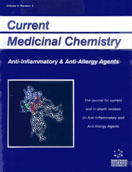Abstract
Atopic dermatitis (AD) is a chronic inflammatory skin disease, affecting more than 10% of children. It frequently predates the development of allergic rhinitis or asthma and is often difficult to treat. The current therapeutic options are limited, might induce side effects, and are not curative, indicating the need for better drugs. Numerous studies demonstrated the complex interrelationship of genetic, environmental, psychologic, skin barrier, and immunologic factors that contribute to the development and severity of AD. Today, AD is considered to be a T-cell mediated dermatosis, in which cytokines play a crucial role. These insights provide new opportunities for targeted therapeutic intervention. One target candidate is the T-helper (Th)-2 cytokine interleukin (IL)-4. Here we review the rationale and the current strategies for targeting IL-4, which might lead to novel therapies for atopic dermatitis and other atopic disorders. This includes the development of i) inhibitors of IL-4 formation, ii ) soluble IL- 4 receptors, iii) IL-4 receptor antagonists and iv) inhibitors of IL-4 signal transduction. The approaches followed in these areas, their current status and their advantages and disadvantages are discussed.
Keywords: IL-4, atopic dermatitis, receptor antagonists
 11
11

